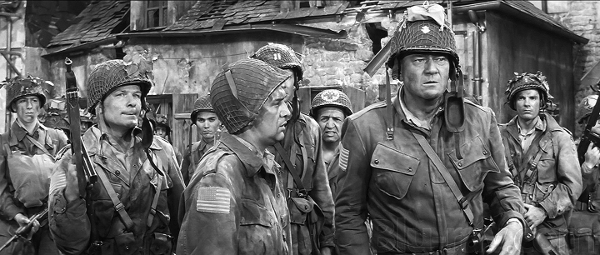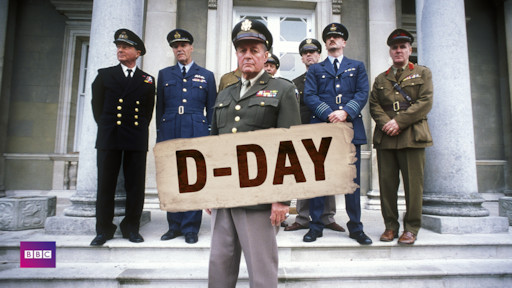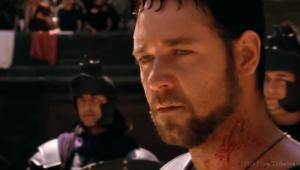Exceptional War-Themed Movies for Summer Viewing

I'm still a strong proponent of packaged media and have bought numerous titles recently, mostly Ultra HD but a few standard Blu-rays as well (no, Virginia, we don't get flooded with freebies from the studios these days, apart from those destined for a review). Nevertheless, it's easy to find something for everyone on one of the usual streaming channels such as Netflix, Amazon Prime Video, and even YouTube. Yes, some of those channels command monthly fees, which can add up quickly if you subscribe to several of them, but that a story for another time.
Despite my preference for discs, the picture quality from streaming can be far better, even on a 65-inch TV, than I feared only a couple of years ago. There's still a lot of dodgy stuff to choose from, but it's not hard to find a gem either. Just do a search for HDR on YouTube, for example, if you want to find short, demo-worthy clips.
While I still use discs to draw serious conclusions on the quality of a display under review, a recent flood of sets for evaluation has pushed me to sample a wide range of streaming material as well. Here's a taste both from discs and a variety of streaming sites.

The Longest Day
The recent 75th anniversary of 1944's D-Day prompted me to pull out my Blu-ray copy of this 3-hour movie. It's an odd duck technically, a rare 2.35:1, 1962 release filmed entirely in black-and-white. That's likely why it still looks fresh and crisp today. A 57 year-old black-and-white movie will inevitably hold up better than a color production from the same era.
For anyone familiar with films of the early '60s the constant parade of cameos here would make for a fun "spot the stars" game. That might be a good party trick but it's also a distraction from the film's important subject matter. And while almost anyone, even today, is likely to recognize John Wayne, Henry Fonda, and Robert Mitchum, what about Paul Anka, Richard Beymer, Fabian, and Tommy Sands? (To be fair, some of these have had successful Hollywood careers even up to the present day; Anka's filmography on IMDB is an eye-opener.)
Apart from this star distraction, however, the movie is well worth your time. As a product of its day its language is strictly PG, and there's little blood (which in any event wouldn't be as shocking in black-and-white as in color) and no gore.

D-Day
While we're on the subject, this 2004 BBC production, now on Netflix, is for my money even better than The Longest Day. It's a docudrama, including archival footage, reenactments, and interviews with soldiers who served on both sides. Fascinating facts rarely covered are addressed here as well, such as a pre-landing, British commando raid on a critical German gun emplacement, and a recon raid prior to that, which resulted in the capture of two British commandos, one of whom was actually interviewed by the commander of the German Atlantic defenses, Irwin Rommel. That short interview is re-enacted here (the actual dialogue was later retrieved from German transcripts).
While The Longest Day is heavily skewed towards the American side of the operations (though it doesn't ignore the British efforts) this production is weighted toward the Brits and Canadians. And while its picture quality is very much a mixed bag, I still highly recommend it.

They Shall Not Grow Old
If there appears to be a world war slant to these recommendations so far, this one qualifies as well, though it's about WWI. Perhaps more so than any war of the violence-filled 20th century, WWI, or The Great War as it was then known, was a mad-hatter of a conflict, begun and fought for reasons that are hard to clearly grasp. This documentary, produced by Peter Jackson (of the Lord of the Rings trilogy), focuses on the rank and file soldiers of the British army and its Commonwealth colleagues.
The result is exceptional. It begins with rarely seen war footage and opens conventionally, with old black and white photography filling only the center of your screen. Soon, however, it expands to fill the full 16:9 frame in full color, with motion as smooth as in modern films. Jackson and his colleagues restored the old footage to minimize the limitations of 100-year old film, colorized it, and processed its original frame rates to match today's 24fps standard. The originals were likely shot with hand-cranked cameras at erratic frame rates and look jerky when played back on modern equipment. While some might object to all of these manipulations, Jackson has said that he wanted the viewer to see these events as the soldiers themselves saw them, or at least as much so as possible. It's hard to disagree with that.
The restoration does more as well. The original footage was, of course, silent, but they've added an effective soundtrack, even going so far as to use lip readers to determine what some of the soldiers were saying and dubbing in the words.
While it would be an exaggeration to say that the film looks and sounds like it was shot yesterday, it's nevertheless an impressive accomplishment. Be warned however that there are many images here of war casualties, though most were taken after the battles themselves (the cameras of the day weren't portable enough to be schlepped around during a major battle and survive).
The movie is available for streaming on Amazon Prime Video but I watched it on a Blu-ray from Amazon. And though the Amazon page warns that the disc is unplayable on North American players, the Blu-ray played without a problem on my U.S. Oppo UDP-203. (According to the user reports it will play on other U.S. Blu-ray players as well. But the only DVD available has not been encoded for the U.S., so it won't play on U.S. players.)

Charité and Charité at War
In the mood for a German two part, 12 episode, hospital-based mini-series? I thought not. I wasn't sure either. I'm normally not a fan of subtitles, but stuck it out and I'm glad I did. It's actually two self-contained series of 6 episodes each. The title refers to a famous Berlin hospital, Charité. The first series begins in the late 1800s in imperial Germany, when the hospital was gaining a reputation for advanced research into pathogen-caused diseases. Charité at War jumps ahead to the 1940s and, with a totally different cast, covers events at the hospital up to and including the end of the war as it struggles under Nazi policies and practices.
Both of the series' feature admirable historical accuracy (judging from Google searches) at least as they pertain to the hospital. Most of the character arcs that form the narratives are fictional (this is a drama after all, not a documentary), but not all. Some of the personal details about the researchers in series are surprisingly true. For example, as depicted in the story one of the three doctors featured in series 1, who all went on to win their own Nobel prizes, actually did divorce his wife and remarry. Another was addicted to opium. The third was Jewish and undoubtedly endured more than his share of harassment even in pre-Nazi Germany. Truth is often stranger than fiction (something Hollywood often forgets).
You can watch either of these two series without the other, or in reverse order, without confusion. Their events are separated by over 40 years, so apart from the hospital itself they share no dramatic continuity or characters. While the subtitles can be distracting (and some of them are laughable; one character advises a patient to "hang in there" in the 1890s!), I didn't mind them after the first hour or so. And apart from the two series needing slightly different picture settings (series 1 is considerably darker; a gamma change nicely corrected for that) the picture quality on both is excellent.
Those who like hospital dramas should check this one out. But don't watch it while eating; there are graphic surgical and autopsy scenes here, particularly in series 1, though they're not frequent.
Short Takes

The Umbrella Academy
I'm not exactly sure where this this truly bizarre science fiction Netflix series is going (I'm still not quite finished with season 1), but its use of HDR (Dolby Vision) is remarkable. I could say the same of Altered Carbon, also on Netflix, but the first two episodes I watched didn't quite draw me in.

The Man in the High Castle
This show, on Amazon Prime Video, forms a good bookend to the beginning of this blog, as it proposes what our world might look like had D-Day failed, Germany got a nuke first and bombed Washington, and Japan and Germany occupied the U.S. (Japan in the west, Germany in the east). Truly eerie (the opening credits are chilling) and very well done dramatically. Based loosely on a Philip K. Dick story with good quality HDR video.





























































